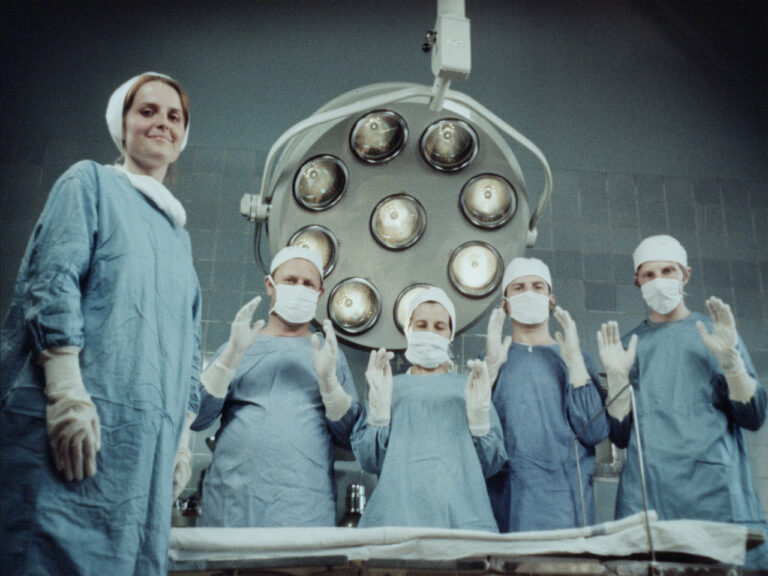
Between 2013 and 2014, hidden surveillance cameras were installed in front of the gates of various Chinese companies that had recently been listed on the New York Stock Exchange. In Ho Rui An’s short film, their footage is recontextualized within a genealogy that traces back to the Lumière brothers’ film, which depicted workers leaving a factory gate. More than a century of European, American, and Chinese cinema history is explored to examine how the Revolution, which returned factories to the workers, has culminated in their near disappearance.
«In what is often regarded as the first motion picture ever made, workers are seen walking out of a factory gate. According to the German filmmaker Harun Farocki, the Lumière Brothers, in choosing this subject for cinema’s original scene, consigned cinema to the space outside the factory, thus allowing stories of leisure and consumption that unfold after a day’s work to become the primary subject of cinematic representation over those of labour and production. Yet, the very visibility of the factory gate in this image also suggests that even as labour retreats from representation, cinema remains inextricable from the conditions of industrial modernity.»
«In 24 Cinematic Points of View of a Factory Gate in China, this relationship between cinema and industry is re-examined through an over-century-long genealogy of European, American and Chinese films. The film opens with a composite of twenty-four videos captured by a surveillance camera pointed towards the gate of a Chinese factory where production appears to have ceased. Throughout the narrative, each video is replaced by a film excerpt that is set in or around a factory, gradually transforming the film’s grid composition into a structure that contains the workers appearing in each film within their individual cell.»
– Ho Rui An
Information
Country
Singapore, SpainYear
2023Length
24'45"
Category
ExperimentalOrigin of archival materials
Workers Leaving the Factory (1895) Possessed (1931) A Burlesque on Carmen (1915) Love on the Dole (1941) Clash by Night (1952) Rocco and His Brothers (1960) The Youth of Maxim (1935) Golden Mountains (1931) Counterplan (1932) Enthusiasm: The Symphony of Donbas (1931) In Spring (1929) Fragment of an Empire (1929) The Song of the Red Flag 红旗歌 (1950) Triumphant Advance 高歌猛进 (1950) Resplendent Light 光芒万丈 (1949) Huang Baomei 黄宝妹 (1958) The Fiery Years 火红的年代 (1974) Youth Like Fire 青春似火 (1976) Red Skirt Popular on the Street 街上流行红裙子 (1984) Contemporary People 当代人 (1981) Fatal Decision 生死抉择 (2000) Blood is Always Hot 血,总是热的 (1983) Hello, Pacific! 你好!太平洋 (1990) The Brave Never Turns Back 好汉不回头 (1996)Original language of the film
IngleseScreenplay
Ho Rui AnCinematography
Ho Rui AnEditing
Ho Rui AnMusic
Zai TangSound
Zai TangProduction
Ho Rui AnDistribution
Ho Rui AnDirector’s biography
Ho Rui An is an artist and writer working in the intersections of contemporary art, cinema, performance and theory. Through lectures, essays and films, his research examines the relations between labour, technology and capital across different systems of governance in a global age.
On the agenda

Fri 25.10.202411:00–13:00
24 Cinematic Points of View of a Factory Gate in China
Ho Rui An
Competition
Italian premiere
Q&A
Screening
Sala Cervi
Via Riva di Reno 72/A
Ticket fee

Thu 24.10.202417:00–19:00
24 Cinematic Points of View of a Factory Gate in China
Ho Rui An
Competition
Italian premiere
Q&A
Screening
Sala Cervi
Via Riva di Reno 72/A
Ticket fee




